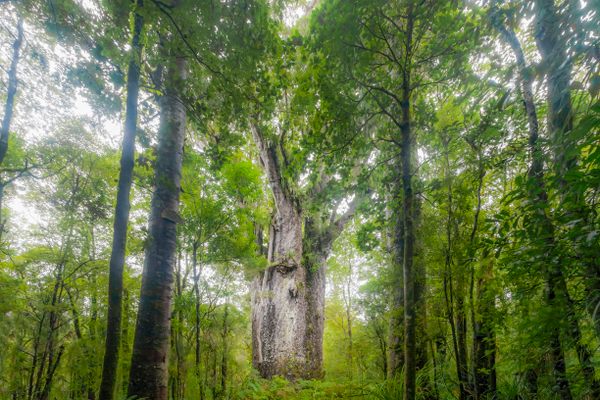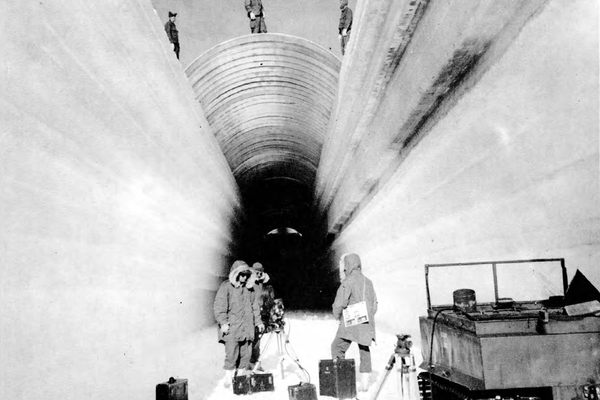Meet a Man Who Makes Sculptures From Lava
Danny Osborne looks to active volcanoes for his art supplies.

Some sculptors are content to carve their visions out of simple, static stone, but Ireland-based Danny Osborne prefers to go to the source. He likes his rock living and flowing. “When I got onto the idea of lava, it seemed like a good way of experimenting,” says Osborne, who has traveled the globe, from South America to the Arctic, for artistic inspiration.
His fascination with molten rock began in 1984 when he was working in Chile. Among the active volcanoes along the country’s border with Argentina, Osborne began to appreciate the primordial nature of flowing lava. He had a background in industrial ceramics, with experience in cast materials such as porcelain, bronze, and glass. Lava seemed like a fascinating new challenge.
In the beginning, Osborne (who is most widely known for his rakish Oscar Wilde memorial sculpture in Dublin) tried making pieces out of what might be called “homemade” lava. He took chunks of hardened basalt, brought in bags from the Canary Islands, and melted them down to pour into his molds. But it was an imperfect process. “The main problem is that when it’s coming out of the crucible, it cools quite rapidly, so you’ve only got half of it poured into the mold when it’s beginning to freeze,” he says. “I decided to go find a volcano with a much larger amount of lava.”

As it turns out, working on an active volcano is somehow even more difficult than it sounds, and not just for the obvious reasons. Hawaii was his first choice, and for years he tried unsuccessfully to get access to an active volcano. “I got everybody on my side. Geologists, ambassadors,” he says. “And they weren’t having it. They probably get a lot of requests for weird things.”
Eventually he went to Guatemala and discovered Pacaya, a volcano that seemed like the perfect candidate. “You have to be quite lucky when dealing with volcanoes,” he says. “You have to get them at just the right time, because they’re unpredictable. Sometimes they’re doing nothing, or oozing a little bit of lava. Or sometimes it can be too much, too violent.” Osborne secured access to the mountain and made his first fresh lava sculptures by plunging molds directly into the mountain’s flows and letting them fill up. Shortly after he had finished this work in 2010, Pacaya unleashed its natural fury—an eruption that covered the area in ash and resulted in multiple deaths.
Putting the dangers aside, Osborne has continued to cast sculptures out of lava. After his years of unsuccessful petitioning, he was finally able to purchase some acres of land on the side of Hawaii’s Puʻu ʻŌʻō volcano. Now he has his very own lava to work with.

Osborne’s artistic process is relatively simple. First he creates a negative mold of the shape he wants—a baby bottle and a conquistador’s helmet are just a couple of his designs. He puts the mold on the end of a long pole so that he can drive it right into red hot streams of lava like Queequeg harpooning a whale. The molds themselves range in complexity from single-piece “jelly molds” to multipart forms that have been bolted together. Osborne has used a handful of materials to create molds that can withstand the oozing crucible of a lava flow, including high-tech compounds, bronze, and even wood. “I made a wooden mold of a bible,” he says. “Of course it turned into a ball of flame pretty quickly. But it filled with lava.”
After years of working on and with volcanoes, Osborne hasn’t received any injuries worse than random burns and the occasional bit of molten lava in his boot. He credits paying close attention to his surroundings. “Volcanoes have a bad reputation for killing lots of people. And rightly so in some areas,” he says. “But there’s dangerous volcanoes and less dangerous volcanoes.”

Osborne has created more than 40 lava sculptures so far, but only around 25 have survived. “Some of them don’t make it down the mountain,” he says, due to the fragility of hardened lava, which is essentially volcanic glass.
Osborne sees lava as a sort of primal material from which everything in the world, including humans, has grown. “It’s a sort of big jump through time,” he says. “That’s why it has such a powerful symbolic value to me. It’s this sort of essential matrix material of everything around these days.”
Osborne has exhibited his works in a number of small shows in Canada and Europe over the years, and he feels as though he’s almost ready to stage a larger show focusing solely on his volcanic work. There certainly seems to be demand for it. “The reaction has always been great. I’ve done far more dangerous stuff for years up in the Arctic,” he says (glaciers are every bit as hazardous as volcanoes), “but somehow the work in the lava captures the imagination more.”







































Follow us on Twitter to get the latest on the world's hidden wonders.
Like us on Facebook to get the latest on the world's hidden wonders.
Follow us on Twitter Like us on Facebook